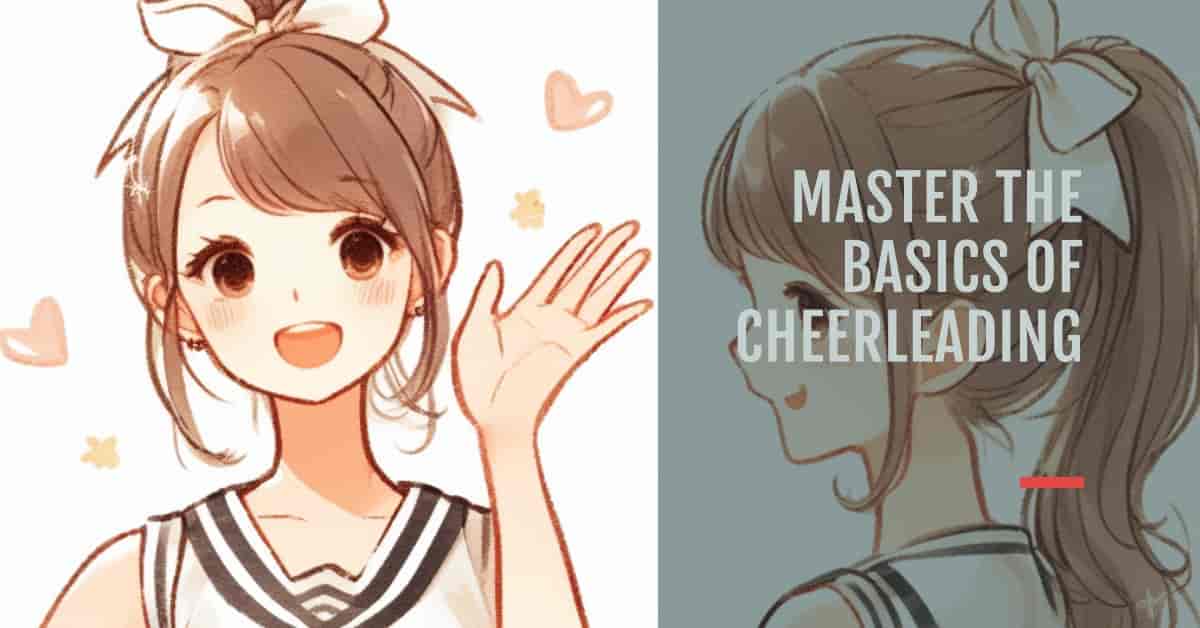Cheerleading is a popular sport that combines dance moves, stunting, jumping, and tumbling to entertain crowds and boost team spirit. Mastering basic cheerleading moves provides a solid foundation for beginners before advancing to more complex skills. This article covers the fundamental cheerleading techniques perfect for novices just getting started.
Learning basic cheerleading moves as a beginner provides many benefits. It improves overall physical fitness through cardio, strength training, and flexibility. Nailing down proper technique also enhances coordination, timing, balance, and motor skills. Additionally, cheerleading teaches valuable interpersonal abilities like leadership, teamwork, and communication.
Basic Cheerleading Jumps
Jumps add visual excitement to cheer performances by demonstrating aerial ability. Here are three standard beginner jumps:
- Tuck Jump – This vertical leap starts with swinging arms back then exploding upwards into a tight tuck position, grabbing shins and keeping toes pointed. Land with bent knees to absorb shock.
- Pike Jump – Like a tuck but grabbing behind the lower legs instead to create a 90-degree “pike” shape in the air. Keep legs straight and toes pointed for full extension.
- Spread-Eagle Jump – A dynamic X-shaped jump executed by jumping up with legs spread open horizontally into the “eagle” position. Remember tight core and pointed toes.
Basic Cheerleading Stunts
Stunts showcase balance, strength, coordination, and teamwork. Low-level stunts have base(s) lifting up a flyer into various poses. Here is an easy trio for newbies:
- Thigh Stands – A precursor to shoulder sits. Flyer places one foot on each base’s shoulder while gripping hands. Base grabs back of flyer’s ankles.
- Shoulder Sits – Flyer sits centered on bases‘ shoulders gripping their hands. Bases firmly grasp flyer’s legs for support.
- Knee Stands – Flyer kneels/stands on upper portion of bases’ thighs. Everyone holds hands to assist balance.
Basic Cheerleading Motions
Motions are choreographed arm movements paired with key words that the crowd follows along with. Simple beginner motions include:
- High V – Arms straight up above head in giant V-shape. Fingers spread wide.
- Low V – Both arms straight out front at waist level, angled down in V-shape.
- Diagonals – Point one arm up high diagonally while opposite arm points down diagonally. Switch back & forth.
- Touchdowns – Fling both arms up forcefully to simulate football referees signaling a touchdown.
Practicing the Basics
When first attempting unfamiliar cheerleading techniques, adopt a gradual build-up approach for best retention. Otherwise, bad habits form quickly. Here are some top practice tips:
- Master One Move at a Time – Thoroughly learn proper skill mechanics before attempting to string moves together fluidly. Avoid rushing ahead prematurely.
- Drills For Precision – Perform single motions slowly and intentionally, emphasizing accuracy. Speed up gradually while maintaining perfect technique.
- Conditioning for Endurance – Build underlying stamina over time. This prevents fatigue-induced sloppy form during longer sessions. Integrate strength training too.
Next Steps Once Basics Solidify
After honing the fundamentals, novice cheerleaders can progress to more advanced endeavors:
- Learning Routines – Combine newly acquired abilities into choreographed dance routines set to music, adding flair and showmanship.
- Joining a Squad – Search for a local rec league or youth cheer squad. Experienced coaches further skills in a fun team environment.
- Advancing Skills – Safely expand your cheer toolkit by adding new jumps, lifts, tosses, and tumbling skills if desired. The sky’s the limit!
Safety Guidelines for Beginner Cheerleaders
Practicing safety first prevents unwanted injuries when attempting new cheerleading techniques. This sport involves gymnastic elements, making it higher risk. Here are some top tips for staying safe:
- Proper Attire – Form-fitting yet stretchy clothing allows a full range of motion without restriction or distraction. Supportive athletic shoes provide stability during jumping/tumbling.
- Warming Up/Stretching – Dynamic warm-ups prep the body for activity, while stretching increases flexibility and helps prevent pulls or strains.
- Using Spotters – Spotters stand ready to assist if someone loses balance during stunts or tricks. Spotting minimizes accidents and falls.
- Learning Proper Technique – Nailing down correct body positioning/mechanics from the start develops muscle memory to execute skills properly long-term. This maximizes both safety and performance.
Conclusion
In summary, cheerleading offers a blend of athletic challenges for determined newcomers ready to put in the work. Start by thoroughly learning basic jumps, stunts, motions and safety protocols covered here. Train smart with proper progressions aimed at ingraining sound technique above all else initially. After cementing these foundation blocks, move towards crafting routines, joining squads, and increasing difficulty. The future looks bright for beginner cheerleaders embarking on this rewarding journey of self-improvement!

